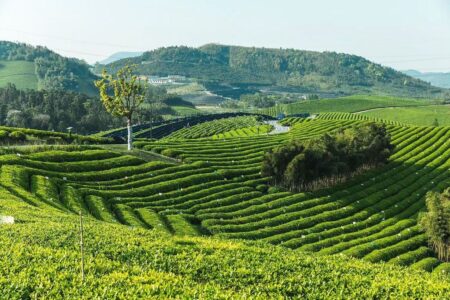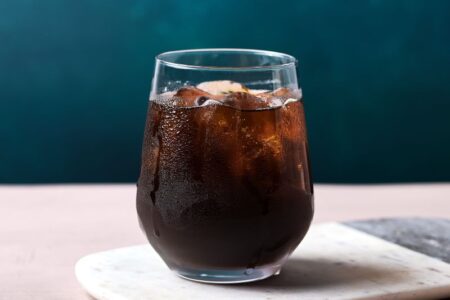Describing Descriptions Part I

When communicating the virtues of coffee, descriptions must be accurate, lacking in ambiguity and hyperbole, to be easily understood. The first of a two-part series on coffee descriptors, explores creating TRUE coffee descriptions.
By Spencer Turer
How do we encourage or persuade customers to try our coffee? Communicating the virtues of the coffee will attract the attention of buyers, for both green coffee and roasted coffee. The success of any beverage program starts with quality: how does it taste? Branding, promotion and merchandising will capture the first sale, but only quality will keep your customers returning time after time. Together we will explore how to create TRUE coffee descriptions: Trustworthy, Realistic, Understandable, Enticing.
Describing coffee’s characteristics and writing menu descriptions are similar. There are generally tacit rules when writing menus: concise statements for quick recognition, using descriptive words that entice the senses and encourage purchase, and getting this information to your audience in a manner that is easily understood. Coffee descriptions, especially value-added attributes, are used to identify a point of differentiation from competitors. Descriptions also catalog differences in quality within an offering list or menu and should provide enough information to substantiate the price of coffee.
Good descriptions, specifically about the coffee’s provenance and flavour profile are proactive and answer the customer’s questions before being asked. Coffee professionals are enthusiastic, passionate and place a high priority on product education, but we often create jargon and use insider’s vernacular not easily understood by consumers. The comprehensive educational programs within the coffee industry seek to provide us with understanding of geography, botany, terroir, processing, and supply chain terminology; terms that are perplexing and obscure to most consumers.
Creating coffee description is relatively easy; begin by writing obvious details. Sales and marketing professionals have a reputation for creating poetic descriptions lacking connection to the product and include hyperbole or inaccuracies do not accurately portray the coffee and are not TRUE. The challenge is to create TRUE coffee descriptions that are quickly and easily understood, that differentiate one coffee from another, and that encourage purchase.
TRUE coffee descriptions are:
- Trustworthy – Coffee descriptions should have credibility to validate the quality expectations of a business. Any claims made in a product description must be confirmed by the operation of the business. For example, coffee certifications must be substantiated by identifying the certification organization, and include an explanation of the program details. Evidence within the business or supply chain must support the claims and description made for each coffee.
Direct Trade or relationship sourcing is disingenuous when presented by the company that does not source the coffee. This is dangerous for private label brands that do not source their own coffee and then appropriate the term from their coffee roaster. Also troubling is a roasting company that misrepresents its sourcing by promoting the actions of its green coffee supplier as its own.
Trust is developed over time through positive interaction and honesty. Trust is quickly destroyed and will cause a customer to look for another provider.
- Realistic – Avoid exaggeration and embellishment. Coffee descriptions should be accurate to the individual product and based on the reality of the supply chain, not an ideal, what is hoped for, or a generalization. Descriptions should be revised when the details of a product or supply chain change. Realistic descriptions are believable and help increase the trust customers have for the product and business supplying the coffee. For example, once a long-standing national brand coffee had two contradicting statements on their roasted coffee package at the same time, both “Same Great Taste Since 18XX” and “New & Improved Flavour.” This is an example of an overzealous graphic designer or marketer not living up to realistic descriptions. Widely used terms like “mountain grown,” “hand-picked,” “craft roasted,” “hand-crafted,” and “specialty” are easily understood by consumers. However, each has an expectation to actual reality and must be avoided if not true.
Fresh is a term that is used throughout the coffee industry and has become ubiquitous. However, it is unclear what is meant by the term when it is printed on packaged roasted coffee. Is it realistic to describe coffee as fresh within a modified atmospheric package that has a shelf-life of four months or longer?
Misinformation or inaccuracies that are not realistic contribute to a customer’s lack of confidence in the product or the brand. For example, coffees are most often itemized by country of origin, but often Kona, Sumatra, Sulawesi, Java, Galapagos and Yunnan are listed as origins, yet these are not countries.
- Understandable – The attributes of the coffee should be presented in a straightforward manner, using terminology that can be recognized and comprehended by the intended audience. Providing context or defining coffee nomenclature may be required when presenting information to consumers. For example, simply listing the name of the farm and varietal is commonplace, Panama Esmeralda Geisha. Labelling the words to indicate farm and varietal, then also presenting the significance of the information to help the consumer understand the value, quality implications and meaning is commonly overlooked.
Coffee’s global supply chain often forces us to utilize words that are not found in every language and may be hard for many to pronounce. Words that are common to specialty coffee professionals may create a barrier between professionals and consumers. Think of Huehuetenango, Yirgacheffe, Xinabajul, Kayanza Gahahe, Nyamasheke, Kawa Maber, Abakundakawa Hingakawa, Cerrado, Oaxaca and Catuai.
Using abbreviations can create confusion even among professionals who may not understand the meaning or significance of the letters, eg, AP, EP, MCM, PW, HB, PC, Gr1, Sc18, MTGB, PFMC etc.
- Enticing – Word choice will help the buyer understand the expected flavour attributes and assist in their purchase decision. This is an opportunity for the seller to extol the features, characteristics and benefits of the coffee to attract interest. An enticing flavour description may intrigue a consumer to make a purchase or confirm that it may be the wrong product for them – accuracy will contribute to creating happy consumers and preventing unpleasant experiences.
Presenting the coffee’s provenance, quality and flavour descriptions in a captivating way, while explaining why this information is important as a point of differentiation from other products or from your competitors, may compel the customer to make a purchase. Creativity is the key when writing enticing descriptions, however, the information must remain trustworthy, realistic and understandable.
Taste Descriptions
Writing taste profiles for coffee has become competitive gamesmanship to present the most creative and esoteric descriptions. Alluring words and inventive phrases are used to entice but can be almost inexplicable. As we progress from the old Coffee Tasters flavour wheel to the new one, coffee professionals are challenged to upgrade their vocabulary and expand their list of possible descriptors. It is important, when the flavour wheel is used as a descriptor guide, to keep coffee descriptions TRUE.
Aroma and taste descriptors are most easily understood when primary flavours are referenced for the perceived attribute. When attributes are categorized into groups, it becomes difficult to understand their meaning without additional training or explanations. Simply put, state what you taste. Word choice is critical to prevent confusion. In my judgment, primary flavours are ones that can be found in nature and purchased directly from a grocer for calibrations. These are the flavours that can be standardized for training by creating calibration standards for aroma and taste, and naming each to the particular primary flavour. For example, grassy is fresh cut green grass, papery is the taste of paper coffee filters, woody is the taste of Popsicle sticks.
TRUE descriptions are best created in collaboration between sales and marketing professionals and product storytellers from supply chain to product development who have expertise in sensory attributes, physical characteristics and the coffee’s origin.
TRUE coffee descriptions match the right coffee with the buyer to increase satisfaction, create distinctive coffee experiences, and to encourage repeat purchases.
Please see Part II: TRUE Green & Roasted Coffee Taste Descriptions in the next issue.
Spencer Turer is vice president of Coffee Enterprises in Hinesburg, Vermont. He is a founding member of the Roasters Guild, a licensed Q grader, and received the SCAA Outstanding Contribution to the Association Award. Turer is an active volunteer for the Specialty Coffee Association and the National Coffee Association of the USA.



